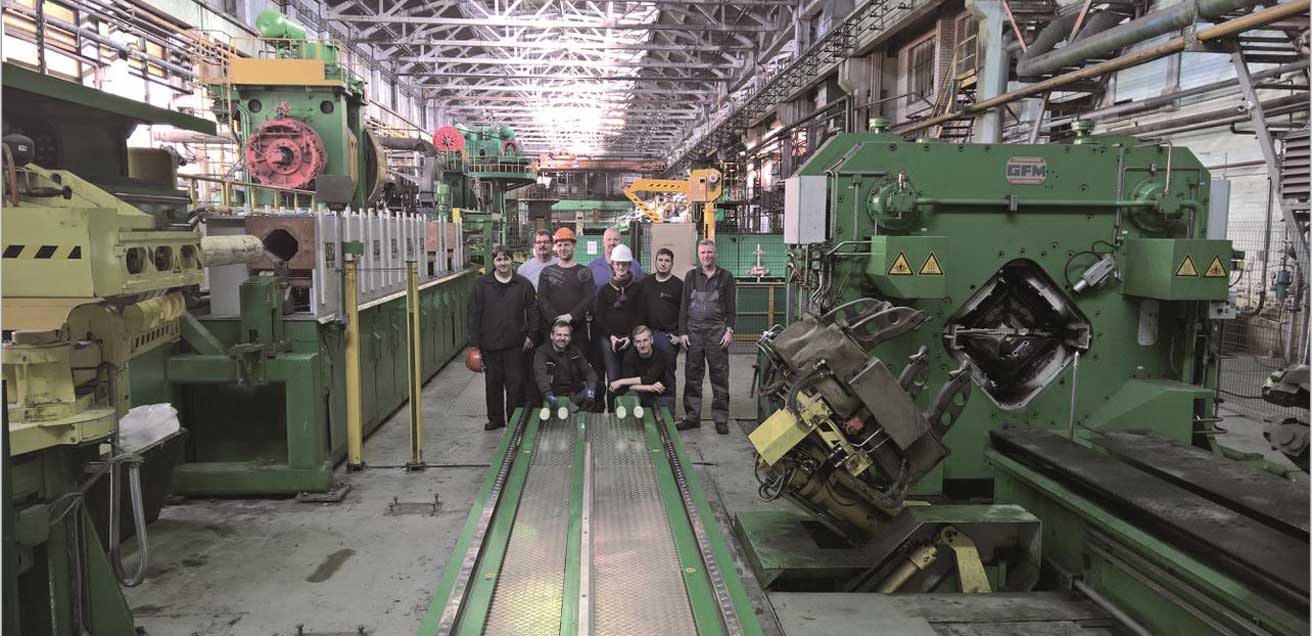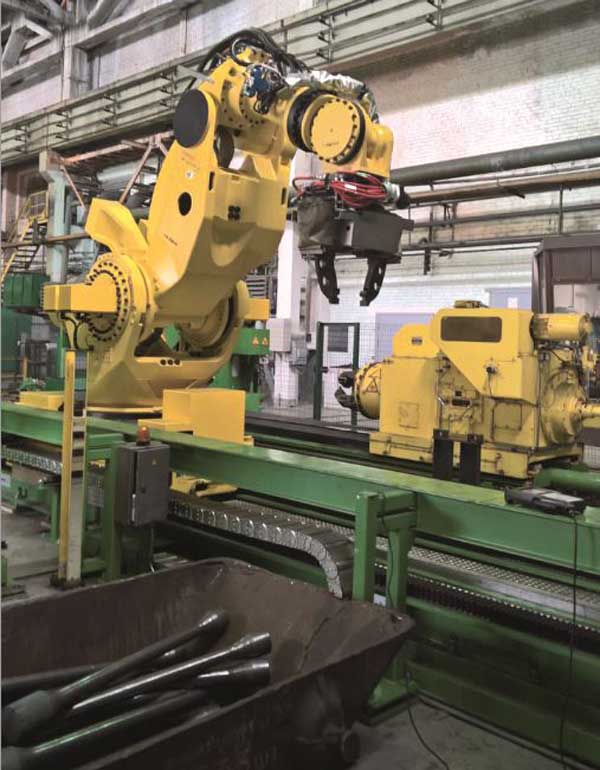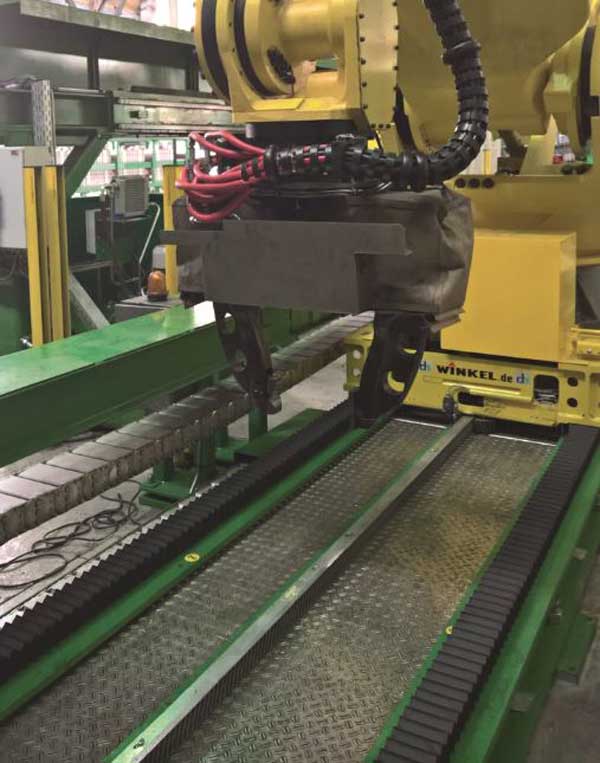In the production conversion for its customer Power Machines Russia (PMR), the special plant manufacturer CTS relied on the support of Shop: Of the Linear TechnologySpecialist delivered a heavy-duty linear guide for a new robot. A special design was used for the tricky task in Saint Petersburg.

Contents
Upgrade production line for new turbine blades
The world's fourth largest manufacturer of power plant turbines, Power Machines Russia There were major changes in the truest sense of the word: the turbine blades that PMR had added to its range were significantly heavier than those previously produced, with a gross weight of 490 kg each. In order to be able to handle this increased weight, the traditional company, whose roots go back to the 19th century, had to upgrade its production line.
PMR hired them for this CTS GmbH from Burgkirchen as general contractor. The internationally active, system- and manufacturer-independent specialist for turnkey special systems and machines in the manufacturing and process industry replaced the previous Fanuc M-900iA/600 robot with the Fanuc M-2000iA/ in order to enable the production of the new and heavier turbine blades. 1200, which handles the turbine blades in the production process.
 Reading tip: Rollon | The engineering partner
Reading tip: Rollon | The engineering partner

But this one is not only stronger, but also with its 8,6 t also significantly heavier than the previously used model. The previous linear guide that moves the robot along the production line was not designed for this weight - a more robust axis with a higher load capacity was needed. And to make the task even trickier, the heavy weight was coupled with limited space and a harsh manufacturing environment. Special knowledge was required here.
Already good experiences with angle
"Due to the requirements and the limited space, it was important to have a partner at our side who is a specialist in the special design of such traversing axes," says Stefan Schmiedlechner, Head of Factory Automation at CTS. Not least on the recommendation of Power Machines Russia, those responsible turned to the market leader for heavy-duty linear guides, Winkel GmbH from Illingen.
PMR has been using some of its products since 2011 Robot on the manufacturer's solutions and has had very good experiences with the robust steel profile construction and the high repeatability of the linear guides. The requirements profile and Winkel’s good name in the industry also played a role.
The Illingers provided a tailor-made solution that enables production in three shifts. The modified one RLE 10.000 Linear guide is slim, low-play and torsion-resistant. It has a repeatability of ± 0,2 mm and a maximum load capacity of 10 t. This is also necessary to carry the heavier robot and move the larger components.
In only 24 weeks to success
“The space in the building, which has been in existence for many years, was a little too tight for a standard axle in this weight class,” says Alessandro Mazzolla, key account manager at Winkel and responsible for the project. On one side, an existing, parallel longitudinal axis limited the scope, while on the other there was a cable duct that had to remain accessible at all costs. “Here we benefited from our many years of experience in special machine construction.”
 In order to do justice to the circumstances, Winkel designed the Robot axis 480 mm narrower and stands the originally floor-guided Energy chain to around 720 mm. Because of the narrower solution and the high load, Rolling carriages instead of ball carriages used to better meet the challenges. “The requirements for production and assembly were extremely high in terms of parallelism and evenness of the guide,” explains Mazzolla.
In order to do justice to the circumstances, Winkel designed the Robot axis 480 mm narrower and stands the originally floor-guided Energy chain to around 720 mm. Because of the narrower solution and the high load, Rolling carriages instead of ball carriages used to better meet the challenges. “The requirements for production and assembly were extremely high in terms of parallelism and evenness of the guide,” explains Mazzolla.
And it had to be quick: just 24 week project duration were budgeted for – from planning to commissioning. CTS first tested the angle solution thoroughly on its own premises for four weeks, and six weeks later the system was ready in the Power Machines Russia factory hall, where it was tested for another four weeks.
Further cooperation planned
CTS is extremely satisfied with the collaboration with Winkel. “The whole project went extremely well,” enthuses Stefan Schmiedlechner. “All expectations were fully met.” And the customer is also satisfied with his angle robot axis. “So far, a year after the work was completed, there has only been positive feedback,” says Schmielechner. “The robot works perfectly and production is running as planned.” Other joint projects are “already being implemented,” he reveals.